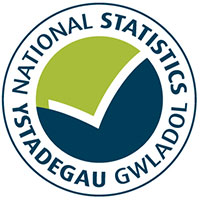Information on the number of new dwellings started, where building has commenced and those completed for July to September 2023
This is not the latest release in the series: New house building
A quarterly report which includes information on new dwellings started (where building work has commenced) and new dwellings completed (where building work has finished and the dwelling is ready for occupation).
The information is based on the reports of local authority building inspectors and the National House Building Council (NHBC). Tenure data should be treated with caution (see notes).
Main points
New dwellings started
- Between July and September 2023, 1,423 new dwellings were started, 9% more than the same quarter of 2022.
New dwellings completed
- Between July and September 2023, 1,005 (r) new dwellings were completed, 25% fewer than the same quarter of 2022.
- Most new dwellings completed between July and September 2023 contained three or more bedrooms (65%).
- The proportion of new dwelling completions which contained three or more bedrooms was unchanged from the same quarter of 2022.
(r) Revised 28 March 2024 due to an updated data submission from one data provider. The figure originally published was 1,000.
New dwellings completed by tenure
- This split should be treated with caution as it is believed to include an undercount of social sector builds and an overcount of private sector builds. Within the social sector, there may be an overcount of RSL builds and an undercount of local authority builds (see notes).
- In July and September 2023, most new dwelling completions were accounted for by the private sector (79%), with a smaller proportion accounted for by RSLs (19%) and local authorities (2%).
- Compared to the same quarter of 2022, the proportion of dwelling completions accounted for by the social sector increased from 17% to 21%.
Notes
- Due to rounding, some figures may not add up to 100%.
- This data is based on the reports of local authority building inspectors and the National House Building Council (NHBC) a private approved inspector. It does not include information from other private approved inspectors. It is sometimes difficult for building control officers and NHBC to identify the intended final tenure of the property (the basis for the tenure information). This may lead to an under-count for the social sector and an over-count for the private sector. Within the social sector it may also lead to an under-count of local authority new house building and an over count of RSL house building. Therefore, the tenure data should be treated with caution.
- Both starts and completions will be influenced by quarterly fluctuations, including the timing of starts and completions on large sites in some authorities and seasonal factors such as holidays and weather. These statistics are not seasonally adjusted.
- We also publish separate statistics on affordable housing provision. The figures cover all additional affordable housing units, whether through new build, purchase, acquisition, leasing or conversion of existing dwellings.
Main headline figures and StatsWales data are published quarterly and a report is published annually. The information published on StatsWales includes local authority level data as well as the number of new dwellings completed by dwelling type and number of bedrooms.
Contact
Holly Flynn
Rydym yn croesawu gohebiaeth yn Gymraeg / We welcome correspondence in Welsh.

